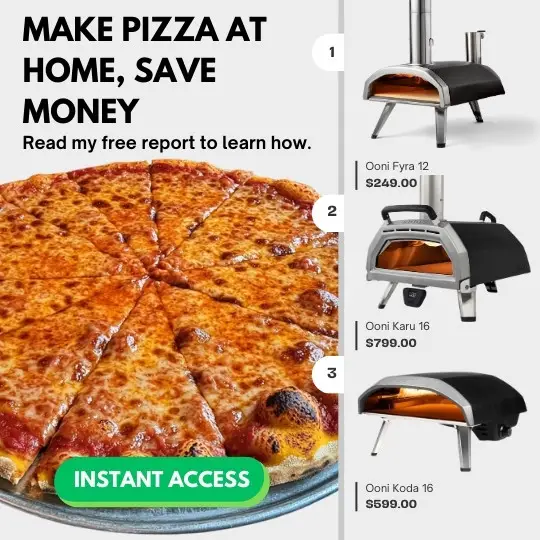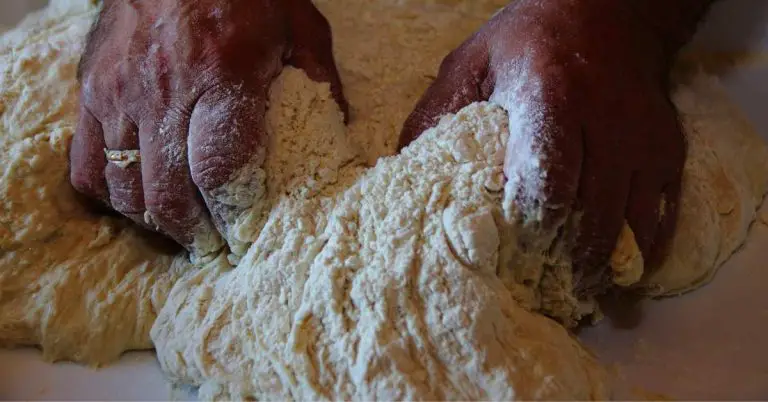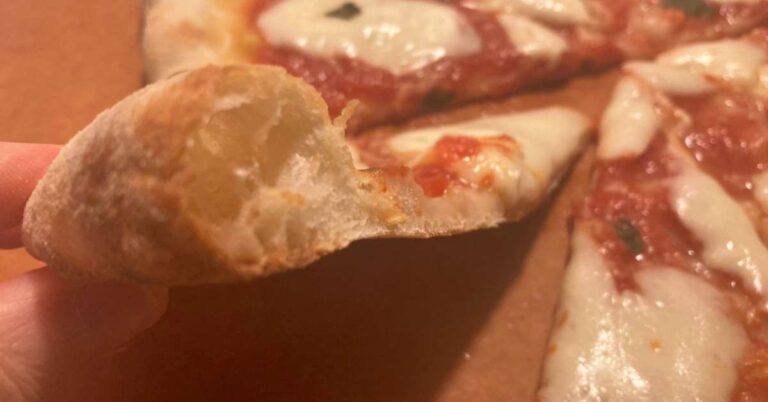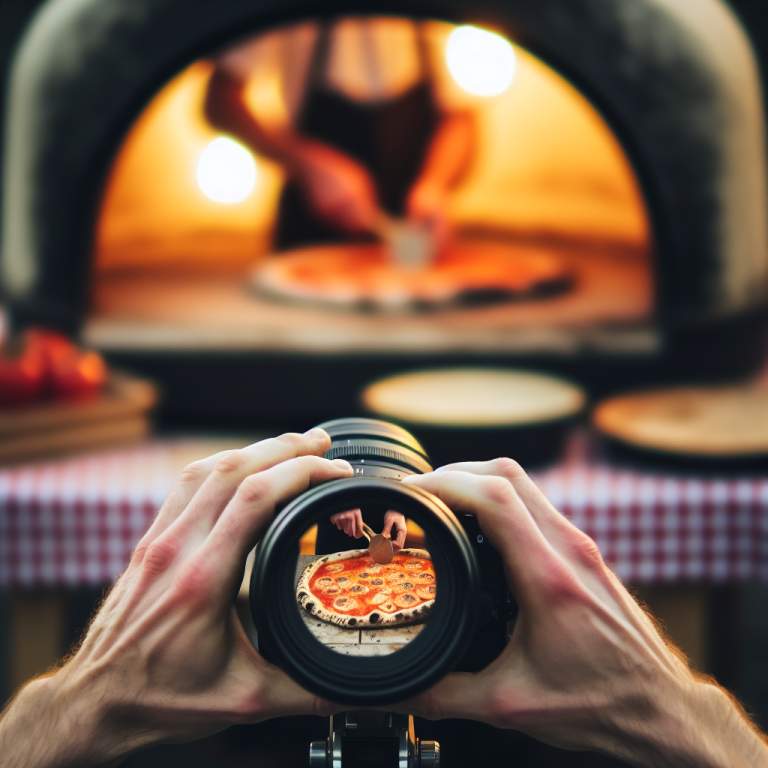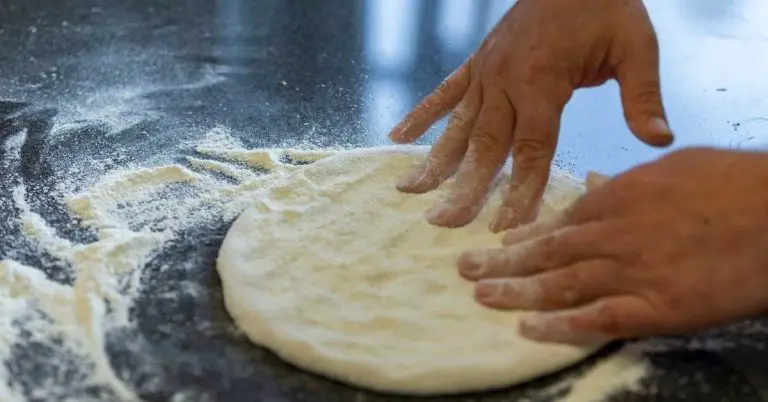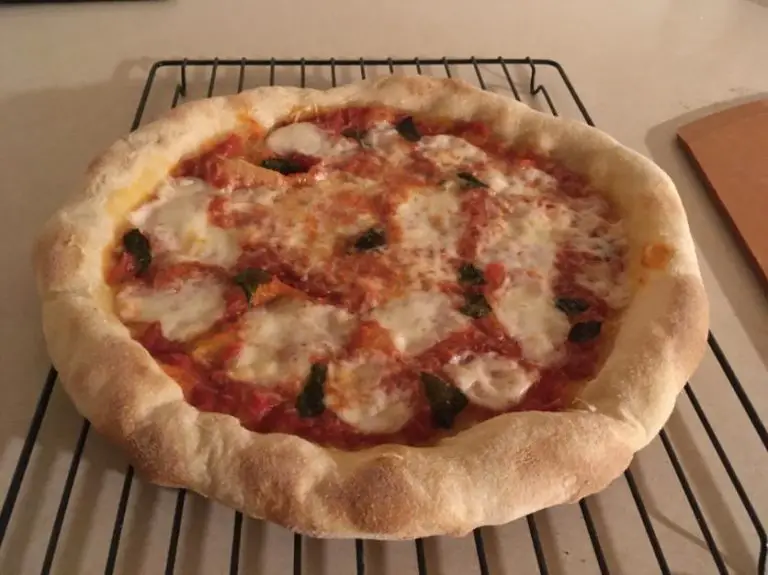Homemade Pizza Making Mistakes To Avoid
People often say “even bad pizza is still good”, but if you’ve ever made any of these homemade pizza making mistakes before, you know that’s not true. Pizza can actually be really bad–even terrible sometimes. But it doesn’t have to be this way.
Let me show you a few of the most common mistakes people make with homemade pizza crust that turn their pizza from an amazing meal to something dry and bland that sits like a brick in your stomach.
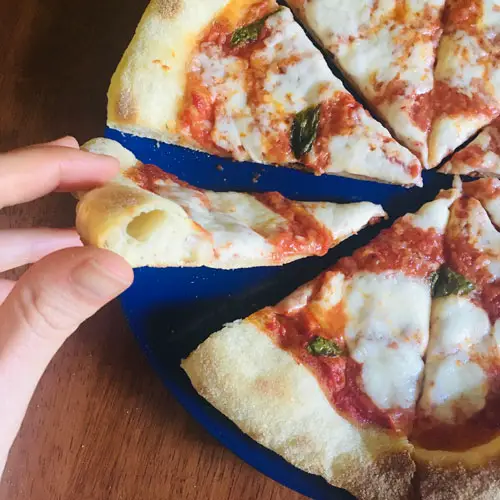
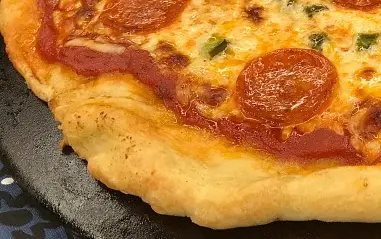
Related Post: Benefits of no-knead pizza dough
Your Pizza Crust Is Too Dry
I love looking at pictures of pizza online, and this is probably the most common homemade pizza making mistakes I see people make. It’s very easy to spot… just look at the crust. When a pizza is made properly, the air inside the crust will puff out as soon as it hits the heat of your oven. The outer edges, not weighed down by toppings, should spring up and be puffy and round. Once cooked, when you press down on the crust, it should spring back up like a sponge.
Poorly crafted homemade pizza, especially with these mistakes, will often have a dry and flat crust with little to no browning. You can tell right away, even just from pictures, because the outer crust will still have ridges in it which means it didn’t rise in the oven and puff out.
The Dry Pizza Crust Solution
There’s a few ways to avoid dry and brittle pizza crust. The first is simply to use a more hydrated dough. I like to use between 65-75% hydration for my homemade pizza dough. What the extra hydration does is prevent the crust from drying out while it’s in the oven. Remember, home pizza ovens are much less hot than at a pizzeria, so it has to stay in the oven longer. The longer it’s in the oven the more it dries up, so the extra hydration really helps to keep it moist and chewy.
Shaping the pizza properly is also a must. Don’t just whip it up in the air like you see on tv or flatten it with a rolling pin. You need to gently but firmly push the air from the middle of the crust towards the outer edges. Make sure to never pinch or flatten the outer rim because it will force the air out and cause it to cook flat and dry.
Another huge factor in achieving an optimal crust is letting your dough ball sit at room temperature for 1-2 hours before shaping the pizza. This will allow air to build inside the crust and for the gluten to relax allowing you to easily press the air from the middle of the dough to the outer edges. Italians call this the cornicione.
Your Pizza Cheese Is Burnt
The cheese on your pizza is supposed to be white to slightly pink in color and stretchy in texture, not brown and flaky. Maybe a brown bubble here and there, but definitely not the whole pizza. If your pizza sounds like this, you probably cooked it too long.
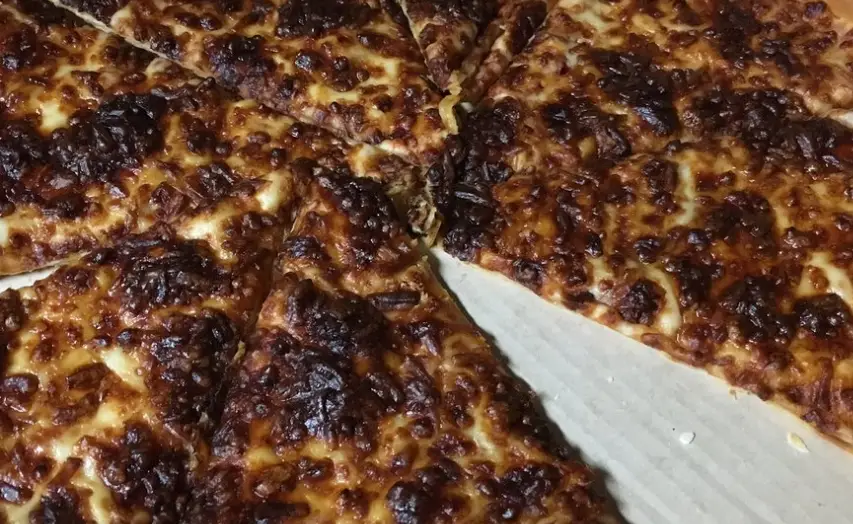
This is a very common problem with homemade pizza because, as I mentioned, you need to cook pizza at home longer because of the higher temperatures.
The Burnt Cheese Solution:
This is an easy one: just don’t cook the cheese for so long. But how do you do that while keeping the pizza in the oven for 10 minutes for more at a time? The solution: bake your pizza in stages. Put your sauce on the crust and bake that first before putting on the cheese. Then, take it out about halfway through the baking process and add your cheese and toppings. Once the cheese is to your liking, you can take it out. Remember, cheese is meant to be melted–not cooked.
Your Pizza Crust Is Too Floppy
Some pizza styles are a bit floppier than others. For example, Neapolitan pizza typically has a tip that flops down when you pick it up. This is fine and delicious.
But if you’re making an American style pizza and your slice is absolutely flaccid when you pick it up, something is wrong. Typically this happens when people load too many toppings onto too thin of a crust or when the pizza hasn’t been allowed to cool properly or long enough after baking.
The Floppy Crust Solution:
If you’re making a thin crust pizza, go easy on the toppings. A thin crust simply can’t handle loads of sauce and cheese and whatever else you put on top of it. Try to aim for about half as much sauce and cheese for your next thin crust pizza. Of course, if you’d rather not give up on the toppings just use a thicker crust.
Additionally, you want to let your pizza cool on a cooling rack for several minutes before cutting it. This will allow time for the steam to exit the bottom properly without reabsorbing back into the crust and making it soggy.
What’s Your Pizza Pet Peeve?
Those were a few of the most prevalent pizza mistakes I see people making most often. But there are many more, and I’ve made most of them myself. What’s your biggest pet peeve when making pizza at home? Let me know and I might include the answer in an upcoming post.

In the meantime, stay tuned for more pizza content.

